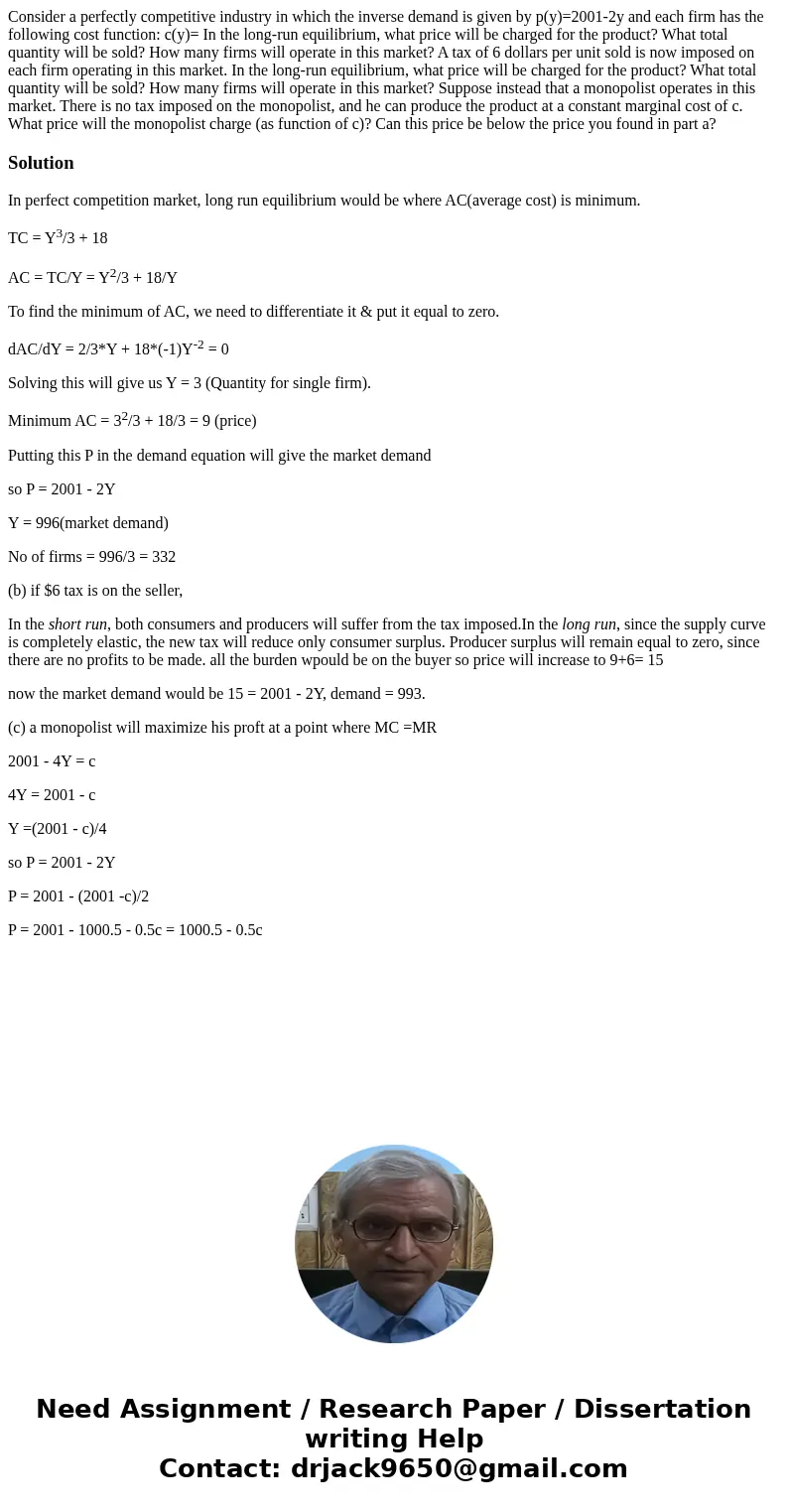Consider a perfectly competitive industry in which the inver
Solution
In perfect competition market, long run equilibrium would be where AC(average cost) is minimum.
TC = Y3/3 + 18
AC = TC/Y = Y2/3 + 18/Y
To find the minimum of AC, we need to differentiate it & put it equal to zero.
dAC/dY = 2/3*Y + 18*(-1)Y-2 = 0
Solving this will give us Y = 3 (Quantity for single firm).
Minimum AC = 32/3 + 18/3 = 9 (price)
Putting this P in the demand equation will give the market demand
so P = 2001 - 2Y
Y = 996(market demand)
No of firms = 996/3 = 332
(b) if $6 tax is on the seller,
In the short run, both consumers and producers will suffer from the tax imposed.In the long run, since the supply curve is completely elastic, the new tax will reduce only consumer surplus. Producer surplus will remain equal to zero, since there are no profits to be made. all the burden wpould be on the buyer so price will increase to 9+6= 15
now the market demand would be 15 = 2001 - 2Y, demand = 993.
(c) a monopolist will maximize his proft at a point where MC =MR
2001 - 4Y = c
4Y = 2001 - c
Y =(2001 - c)/4
so P = 2001 - 2Y
P = 2001 - (2001 -c)/2
P = 2001 - 1000.5 - 0.5c = 1000.5 - 0.5c

 Homework Sourse
Homework Sourse